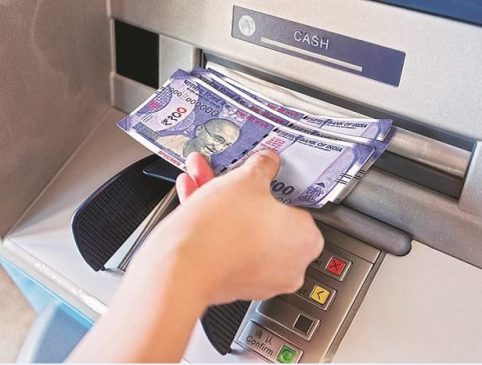Despite the government’s push for a digital economy, cash continues to attract Indians the most as the medium of exchange, suggests a report titled ‘CMS India Cash Vibrancy Report 2023’ by CMS Info Systems. According to the report, the ATM cash withdrawals zoomed 235 per cent to Rs 2.84 lakh crore in March 2023 in a matter of 76 months after demonetization.
It is the first extensive industry report on cash usage by consumers, and highlights the megatrends through the period FY 2022-23 against the previous fiscal year. The pan-India ATM cash replenishments carried out by CMS Info Systems witnessed an annual growth of 16.6 per cent in FY 2023, said the report.
Read More: Bank of Maharashtra tops PSU lenders chart in profit and loan growth in FY23
The currency in circulation (CIC) has gone up to Rs 31.33 lakh crore in March 2022, from Rs 13 lakh crore in 2014, finance minister Nirmala Sitharaman said in the Lok Sabha in March 2023.
India’s CIC to GDP ratio has averaged close to 12.4 per cent which is higher than the 10-year average of 11.8 per cent, said the CMS report. It has touched 8.7 per cent in 2016, the report added. However, according to the government, CIC, which includes bank notes and coins, to GDP ratio stood at 13.7 per cent as on March 25, 2022, up from 11.6 per cent as on March 2014.
Last week, the Reserve Bank of India announced the withdrawal of Rs 2,000 currency notes from circulation. Those who hold Rs 2,000 can visit a bank branch to deposit or exchange the bank notes till September 30, 2022. The value of 2000-rupee notes in circulation is Rs 3.62 lakh crore, about 10.8 per cent of the currency in circulation.
The report demonstrates the relevance and importance of cash in the Indian economy. We have seen 10.1 per cent growth in monthly average cash replenishment at ATMs and a strong 1.3 times increase in average cash collection per point with e-commerce companies in FY23, said Anush Raghavan, President, Cash Management Services, CMS Info Systems.
Maharashtra, Gujarat, Tamil Nadu, Karnataka, and Uttar Pradesh together accounted for 43.1 per cent of the total ATM cash replenished by CMS Info Systems across the country in FY 2023.
Interestingly, these are the top 5 states with maximum gross state domestic product (GSDP) in FY22 according to the Ministry of Statistics and Programme Implementation.
Karnataka, which hosts Bengaluru, the Fintech capital of India, witnessed the highest annual average cash replenishment per ATM at Rs 1.73 crore in FY23, which was 18.1 per cent higher than Rs 1.46 crore cash replenished per ATM a year ago. It was followed by Chhattisgarh with cash replenishment of Rs 1.58 crore in FY 2023, down 2.1 per cent.
Read More: How To Activate LIC WhatsApp Service Online Or Via Chat? Step By Step Process Explained Here
At $421 billion in 2021, India saw the third-highest annual growth of 7.9 per cent in CIC, after the UK (11.8 per cent) and China (10.2 per cent) respectively saw the highest and second-highest annual growth over 2020, said the report.
“A significant portion of the population in India is unbanked, with no access to formal banking services. They rely on cash usage every day as their primary means of conducting transactions. Under penetration of financial and digital literacy further leads to security concerns for digital payments despite the convenience offered,” Raghavan added.
Despite the usage of cash in the economy, experts believe that adoption of digital payment has also increased over the years in the Indian economy. The increase in the domestic GDP and formalization has created the space for the same, they say.
RBI has reported that the cash in circulation has risen by 83 per cent since 2016. The cash flow in the economy has also propelled in the last six years due to the increase in our GDP. Although cash is still the ruler in the Indian market, digitization is drawing alongside at a good pace, said Tashwinder Singh, the MD & CEO of Niyogin Fintech .
“The adoption of digital financial services has helped bring more individuals into the formal banking sector, promoting financial inclusion and supporting economic growth. With the expansion of financial literacy, neo-banking and fintechs, India is gradually transitioning towards becoming a cashless economy,” he said.
Dr Sanajy Tomar, an author, researcher and professor at FOSTIIMA said that the subsequent surge in cash circulation necessitates a comprehensive exploration. It reveals the complex interplay of factors in a diverse country where cash remains deeply embedded in daily transactions.
“To Factors such as accessibility and acceptance of digital payment infrastructure, cultural and behavioral tendencies, challenges in accessibility, and the vast informal economy contribute to the ongoing reliance on cash. The behavior of individuals and businesses towards cash, and the potential consequences for financial inclusion and transparency,” he added.



































